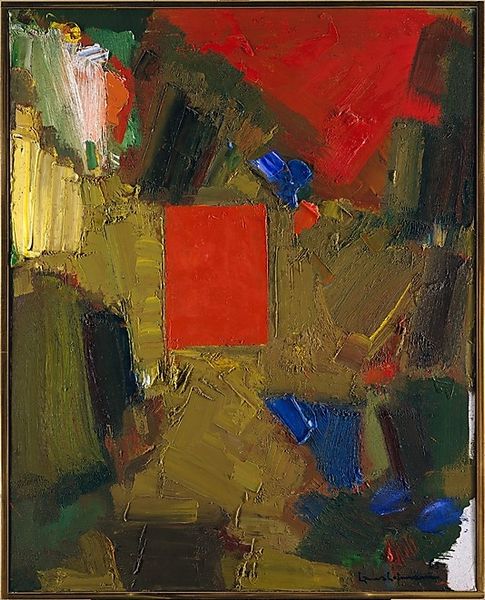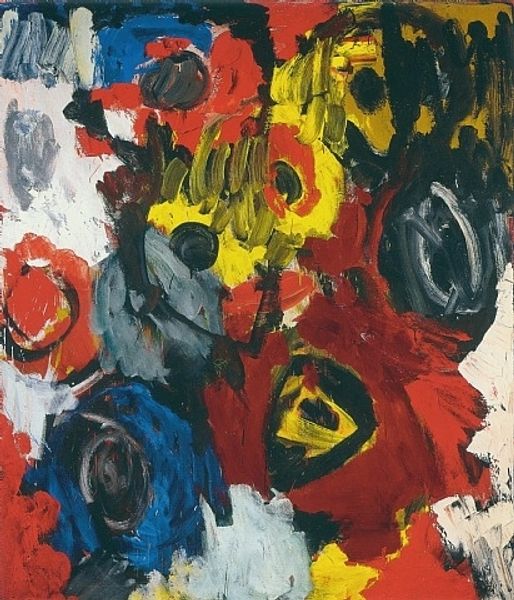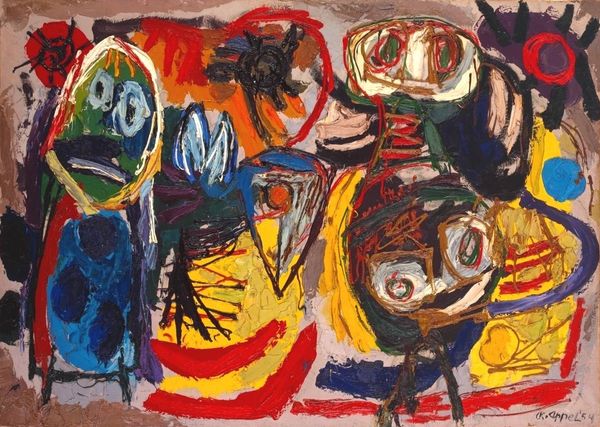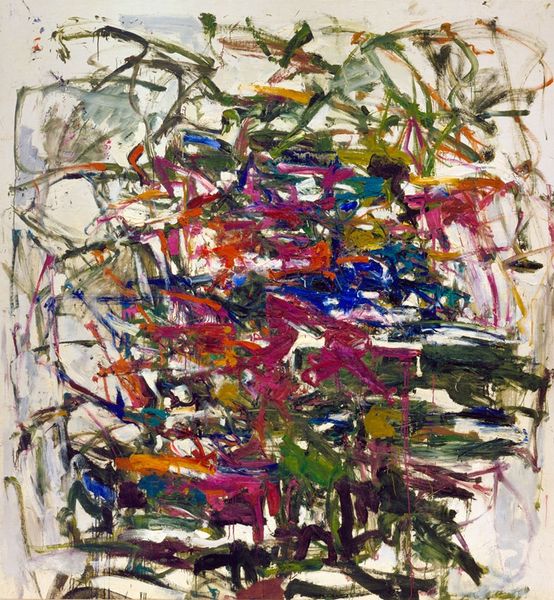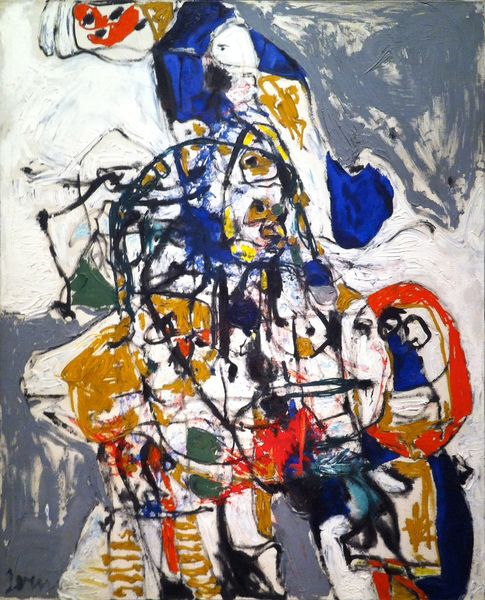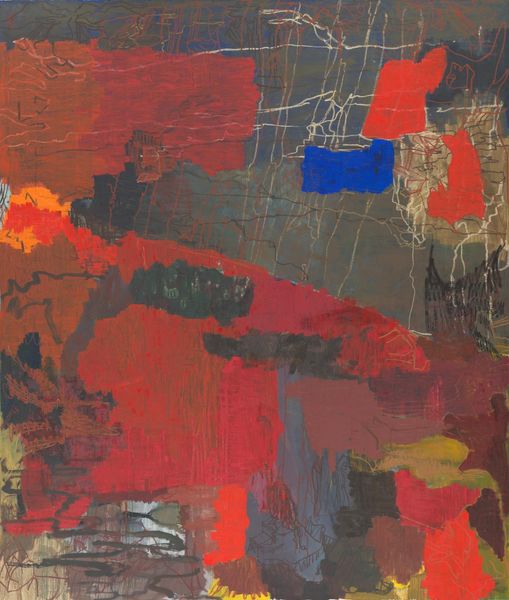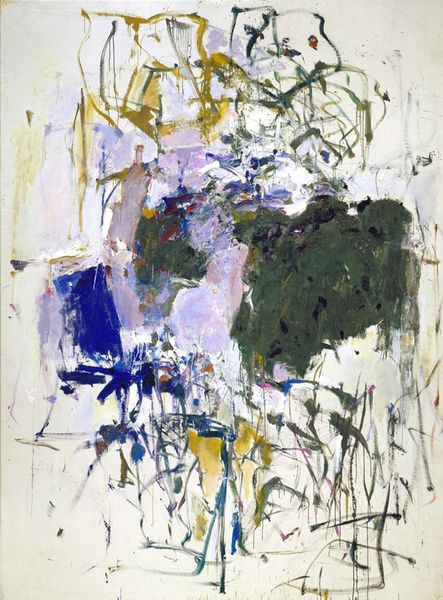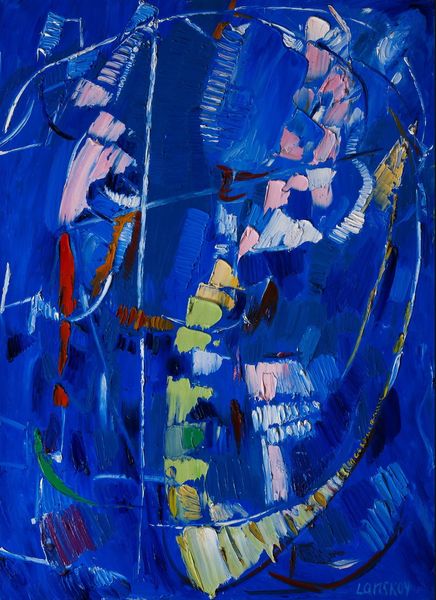
Copyright: Hans Hofmann,Fair Use
Editor: This is “The Third Hand,” an oil painting by Hans Hofmann from 1947. It’s such a riot of colors and shapes. There's something almost primal about the handprints, set amongst all that abstraction. What significance do you think the handprints hold in this piece? Curator: The hand, of course, is a potent symbol throughout history and across cultures. In Hofmann's work, and especially considering the title, "The Third Hand," it moves beyond simple representation. Think about the hand as a signifier of action, creation, and control. Editor: So, almost like an extension of the artist himself? Curator: Precisely! And more than that, consider its primal nature, as you pointed out. Hands connect us to our ancestors. Handprints evoke cave paintings, ancient rituals, a fundamental need to leave our mark. Editor: That's fascinating. It gives a whole new dimension to the seemingly random placement of colors and forms. Curator: Does it not? And look closely. Notice how the colors interact—the aggressive reds, the calming blues, the vibrant yellows. Do those hands interact? The tension lies in deciphering the relationship between the control and the apparent chaos, inviting us to engage with the symbols he presents. Editor: So, Hofmann is layering visual metaphors here: hands, colors, abstract shapes, all communicating at once. Curator: He’s speaking to our subconscious through the universal language of symbols. How does knowing that affect your perception of the work now? Editor: It transforms it. It feels less like an abstract jumble and more like a powerful statement about creation, influence, and maybe even legacy. Curator: Yes! We are both imprinting, like the hand on the canvas.
Comments
No comments
Be the first to comment and join the conversation on the ultimate creative platform.


